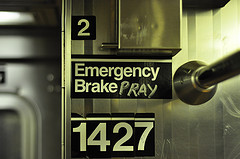 The purpose of this post is to discuss different investment options inside of your emergency fund. A small tweak in your investment strategy can make you a few hundred dollars a year. Not going to make you rich but worth the effort.
The purpose of this post is to discuss different investment options inside of your emergency fund. A small tweak in your investment strategy can make you a few hundred dollars a year. Not going to make you rich but worth the effort.
Why Not Invest It All in Cash?
The general advice is to place your entire emergency fund in cash. This makes sense for some but not for everyone.
The reason you might not want to invest your emergency fund entirely in cash is because investing in cash yields a low rate of return. If you’re willing to take a little more risk, you could have a higher rate of return.
For those with an emergency fund of $5,000, this might not matter too much. However, once you reach $10,000 or even $20,000 a couple of extra points per year can really compound over time.
Who Would Use This Approach?
This approach is for anyone who needs an emergency fund over three to six months of expenses. For example, say you had a career change coming up and you wanted to have at least 12 months of expenses in your emergency fund before you made that change.
If your situation doesn’t call for a longer term emergency fund, this post will be of no use. You’re better off using your savings to invest long-term.
Multiple Layer Investment Approach
If you wanted to spice up your emergency fund a bit to earn a little higher rate of return, a good option is to invest your emergency fund in layers.
Your first layer would always be in cash. The second layer, you can get a little more aggressive with your investments. If you wanted to, you can go to a third layer.
Here’s an example of what I mean:
- Layer # 1 – 3-6 Months of Expenses – Invested in Cash or Money Market Funds
- Layer # 2 – 3-6 Months of Expenses – Invested in Short-Term Bonds or CD’s
- Layer # 3 – 3-6 Months of Expenses – Invested in Medium-Term Bonds
Learn more about how about investing in bonds.
Advantages to Multiple Layer Approach
The biggest advantage is the increase rate of return.
Plus, if you reinvest your dividends, your emergency fund organically grows over time. For example, this year you might only have a 6 month emergency fund, but next year it can grow to 7 months without adding any additional funds.
Disadvantages to Multiple Layer Approach
If you need your entire emergency fund all at once, there is a chance that your bond investments could have a lower market value at the time of sale. If it was a true emergency, you would have to take the loss.
Therefore, take this opportunity to think about your personal situation and identify what events in your life could force you to withdraw 6 months worth of expenses.
Personally, what pops into my head is a loss to my house not covered by insurance or a medical loss that isn’t covered by insurance. If my income went to zero the next month, I wouldn’t need to withdraw the funds all at once. I could withdraw them over time.
Using Your Roth IRA to Fund Layer’s 2 & 3
If you really want to optimize your emergency fund, you can place layers 2 & 3 inside of your Roth IRA. Since you’re making a higher return on your investments, and those investments pay dividends which make them a tax inefficient, this is another option.
I recently wrote an in-depth article on using your Roth IRA for an emergency fund, which you should read before considering doing this.
Conclusion | Emergency Fund Investments
This little adjustment over time to your emergency fund investments, will not make you a millionaire. It’s a simple tweak you can make to earn an extra few hundred dollars a year.
If anyone does something similar to this let me know. I would be interested in hearing what investments you chose and why you need a larger emergency fund.
{ 1 comment }
We can’t invest our whole cash in fund ,but the topic layer by layer investment is the best way of investment .Investing money doesn’t get profit all the time .So it’s better to invest it “Layer by Layer”, so that we get to when to invest and when to not
Comments on this entry are closed.